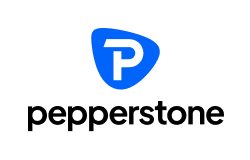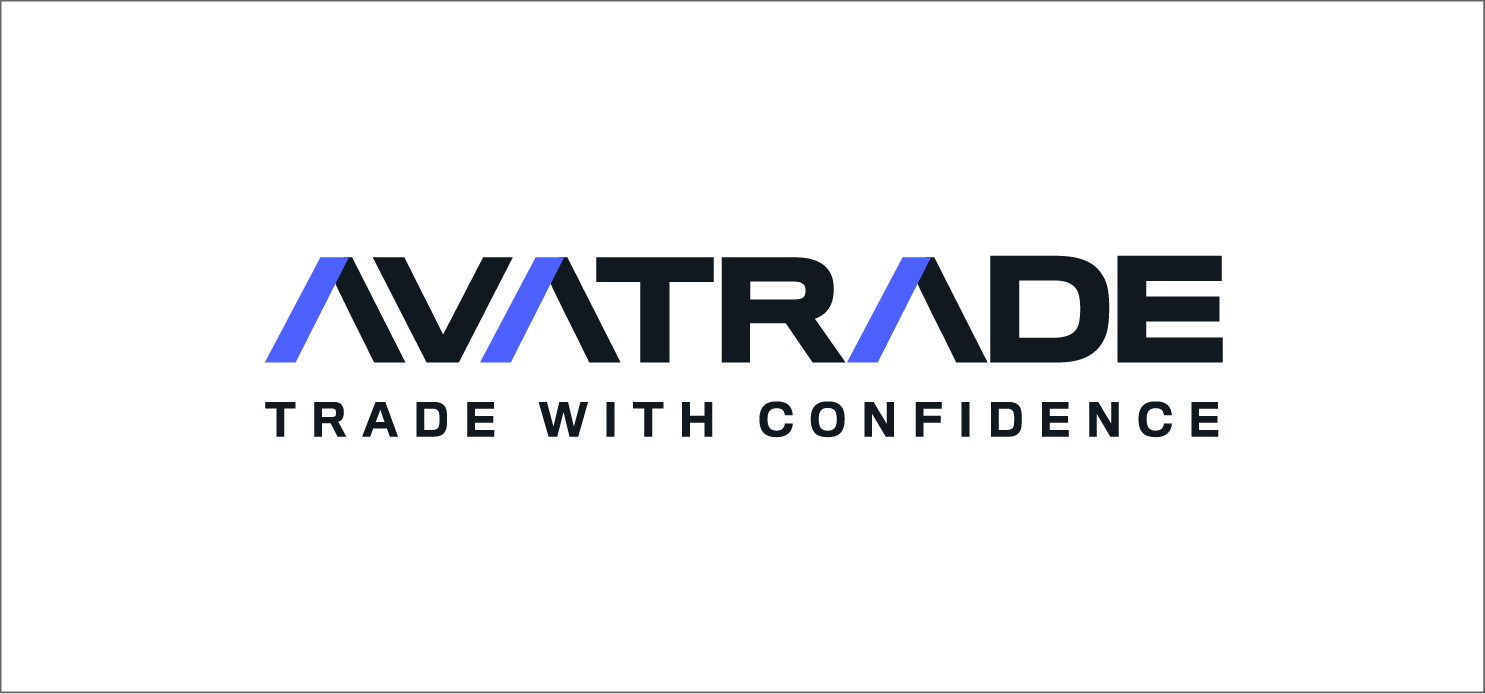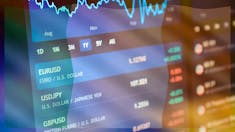Best 6 Trading Platforms in Mexico (2025 Review)
All products and services featured are independently selected by WikiJob. When you register or purchase through links on this page, we may earn a commission.
- A list of the Top Trading Platforms in Mexico for January 2025:
- Comparison Chart of the Best Trading Platforms in Mexico for January 2025
- Description of the Best Trading Platforms in Mexico for January 2025
- What Is a Trading Platform?
- Key Points to Remember When Choosing a Trading Platform in 2025
empty
empty
empty
empty
empty
empty
empty
empty
- Frequently Asked Questions
- Final Thoughts
A list of the Top Trading Platforms in Mexico for January 2025:
Comparison Chart of the Best Trading Platforms in Mexico for January 2025
Instruments Forex CFDs, Indices, Commodities, Cryptocurrencies, ETFs, Shares | Platform MetaTrader 4 (MT4), MetaTrader 5 (MT5), cTrader, TradingView, Pepperstone's own platform | Education Webinars, Tutorials, Educational Resources | |||
Instruments Forex, CFDs, Stocks | Platform xStation, MT4, MT5 | Education Webinars, Tutorials | |||
Instruments Forex, CFDs, Stocks | Platform AvaTradeGO, MT4, MT5 | Education Educational Resources | |||
Instruments Forex, CFDs, Stocks | Platform IG Platform, MT4 | Education IG Academy | |||
Trader Saxo | Instruments Forex, CFDs, Stocks | Platform SaxoTraderGO, SaxoTraderPro | Education Webinars, Workshops | ||
Trader Interactive Brokers | Instruments Wide Range | Platform Trader Workstation, WebTrader | Education Webinars, Courses |
1. Pepperstone
Pros
- Extensively regulated
- No minimum deposit
- Low fees and mostly free withdrawals
- Good customer service
Cons
- No investor protection for clients outside UK, EU and EEA
- Withdrawal fee for international bank wires
- CFDs only
Pepperstone is recognized as one of the top trading platforms available to traders in Mexico due to its extensive features, regulatory compliance, and favorable trading conditions.
Pepperstone offers over 1,200 tradable CFD instruments, including forex, shares, indices, commodities, ETFs, and cryptocurrencies. This wide range allows traders to diversify their portfolios effectively.
The broker supports multiple advanced trading platforms, including MetaTrader 4 (MT4), MetaTrader 5 (MT5), cTrader, and TradingView.
These platforms are well-regarded for their robust charting tools, algorithmic trading capabilities, and user-friendly interfaces, catering to both novice and experienced traders.
Pepperstone offers highly competitive spreads, especially with their Razor account. For example, spreads can be as low as 0.0 pips for EUR/USD, with a commission of $3.50 per one lot per side, making it an attractive option for cost-conscious traders.
This pricing model is particularly beneficial for high-frequency traders and scalpers.
Traders in Mexico can benefit from leverage up to 1:500 for forex trading pro accounts and 1:200 for retail accounts, which allows for greater exposure with a smaller initial investment. However, it's important to note that leverage can significantly increase both potential profits and risks.
In LATAM Pepperstone is regulated by the SCB and is also regulated by multiple top-tier authorities, including the Financial Conduct Authority (FCA) in the UK and the Australian Securities and Investments Commission (ASIC).
This ensures a secure trading environment with robust client protection measures.
The platform is noted for its fast execution speeds, averaging around 30 milliseconds. This is crucial for traders who need quick order processing to take advantage of market movements.
The account opening process is fully digital, quick, and requires no minimum deposit for standard accounts, making it accessible for traders of all levels. Additionally, Pepperstone offers multiple deposit and withdrawal options without any deposit fees.
2. XTB
Pros
- Regulated by the FCA
- Low forex fees
- Fast withdrawal and deposit with no fee
- Live chat customer service
Cons
- No US clients
- Limited product portfolio
- High fees for stock CFDs
XTB was founded in 2002 and has headquarters in both London and Warsaw. XTB is regulated by FCA, CySEC, KNF, CNMV and the IFSC.
XTB is a popular option thanks to the fast and simple online account opening with no minimum deposit and low forex fees.
There are no monthly account fees (unless the account is inactive for a year), and deposits are free.
The base currencies for XTB are USD, EUR, GBP, HUF, and PLN; therefore, be aware of conversion fees if depositing Pesos.
Deposits can be made via bank transfer, credit or debit card, and electronic wallet, but withdrawals are only allowed through bank transfer, and there is a fee if the amount is below $100.
XTB has a proprietary platform that is available on the web, mobile and desktop, and they also offer access to the market through MetaTrader 4.
The web trading platform is called xStation 5 and has a professional-looking interface that is user-friendly and customizable.
A desktop platform is a downloadable option that is the same as the web trader.
The security-conscious might not like the fact that there is only a single-step log in.
However, the simple to navigate and search platform offers some common order types.
The XTB Order Calculator gives you the parameters for each trade; therefore, you know exactly how much it will cost.
You can set up alerts and notifications via push, SMS and email.
The mobile platform is available on iOS and Android, offering the same functionality as the web trading platform with a simple and easy-to-use interface.
With XTB, you can trade using the following instruments:
- 49 Currency Pairs
- 42 Stock Index CFDs
- 1,800 Stock CFDs
- 114 ETF CFDs
- 22 Commodity CFDs
- 25 Cryptocurrencies
- 17 Stock Markets
- 220 ETFs
The research available on XTB includes market analysis that is on the XTB website and trading ideas.
The fundamental data is limited, but the news feed is curated by the in-house research team and informs the ‘heatmap’ of market sentiment.
The stock and ETF scanner gives good ideas for traders to decide what is going to be big.
There is a demo account available alongside platform tutorials.
As a place to learn, the education that the XTB team has put together includes structured eBooks and articles based on trader experience, as well as videos and webinars.
Customer service with XTB is fast, even though it is not available 24/7. You can contact XTB via phone, live chat and email.
CFDs are complex instruments and come with a high risk of losing money rapidly due to leverage. 76% of retail investor accounts lose money when trading CFDs with this provider. You should consider whether you understand how CFDs work and whether you can afford to take the high risk of losing your money.
3. AvaTrade
Pros
- Worldwide regulated
- Multiple platforms – MT4, MT5, etc.
- Negative balance protection
- 20% welcome bonus
- Educational content
- Wide rage of payments methods
- Fixed spreads
Cons
- You can’t buy stocks
- Quarterly and annual inactivity fees
- Custumer support is not available 24/7
- No bonus for EU based clients
- No US clients accepted
- Imitated crypto assets
AvaTrade is a CFD Regulated broker with +1,000 financial instruments and multiple trading platforms. It has been operating since 2006.
It offers a 20% welcome bonus up to $10,000, according to regulation and a free 21-day demo account with $100,000.
Instruments include:
- Metals
- Commodities
- Stocks
- FX Options
- Oil
- ETFs
- Options
- Crypto currencies
- CFDs
- Indexes
- Shares
- Spread betting
- Indices
- Forex
- Bonds
AVATrade EU Ltd is regulated by the Central Bank of Ireland. (No.C53877) Ava Trade Markets Ltd. is regulated by the B.V.I Financial Services Commission. It is also highly regulated in Australia, South Africa, Japan, Middle East, Cyprus and Israel
You can not trade with AvaTrade in the US, North Korea, New Zealand, Iran or Belgium.
Mínimum deposit of $100, no withdraw limit and no fees.
4. IG
Pros
- Highly regulated
- MetaTrader 4 (MT4)
- Over 10,000 instruments
- Available in the UK and US
- 24/7 customer support
Cons
- High fees
- No deposit compensation scheme for US accounts
- No copy trading
- Inactivity fees
IG is a great share trading platform for beginners thanks to its user-friendly interface and extensive educational resources.
Pros of IG include a wide range of trading instruments and markets, as well as the ability to access multiple account types and trading platforms. The platform also offers a demo account for beginners to practise trading strategies before investing real money.
However, IG isn’t the cheapest share trading platform, with relatively high trading fees and a minimum deposit requirement of £250 when paying by credit/debit card or PayPal.
In terms of additional fees, IG charges a commission fee for share trading, starting from £8 per trade. There’s also a custody fee of 0.25% per year for holdings of £250 or more.
Overall, IG is a solid choice for beginners looking for a user-friendly platform with extensive educational resources, but investors should be aware of its fees and minimum deposit requirements.
5. Saxo
Pros
- Heavily regulated
- Good product portfolio
- Low forex fees
- No withdrawal or inactivity fees
Cons
- Does not accept US clients
- High fees for options, futures and bonds
Saxo is a Danish investment bank that was founded in 1992.
As a well-regarded broker, it offers regulation from the Danish FSA and the FCA. Saxo offers lower trading fees depending on volume.
While there are several base currencies offered by Saxo, Pesos are not one of them. Therefore, it is worth remembering that although there is no deposit fee, there will be a conversion fee.
Withdrawals can only be made through bank transfer.
The Saxo proprietary platform is available for web trading as a desktop trading platform or a mobile application.
Both the desktop and web trading platforms have similar, user-friendly designs that are simple to customize.
The two-step login offers a good level of security.
The platforms have several order types that users can make, and you can create alerts and notifications about what matters to you, like price or volatility.
The mobile application is seamless, making trading on the go simple. However, it is not as straightforward as the web or desktop version.
The trading instruments that are available on the Saxo trading platforms include:
- 28 Stock Markets
- 3,100 ETFs
- 182 Currency Pairs
- 40,000 Bonds
- 23 Options Markets
- 23 Futures Markets
- 29 Stock Index CFDs
- 8.800 Stock CFDs
- 675 ETF CFDs
- 19 Community CFDs
- Five Bond CFDs
As previously mentioned, the customer service and support available from Saxo is excellent.
Although only available through phone and email, the team is responsive and helpful. Customer service is not available 24/7, however.
In terms of research, interactive charting and trading ideas, including analyses and recommendations are complemented with detailed fundamental data about each trading instrument and business, both current and historical.
Saxo also provides daily podcasts from their research team, and a news feed and an economical calendar.
The education available from Saxo might not be as extensive as other platforms; however, there is a demo account, platform tutorials, and some videos and webinars that are useful sources of knowledge and education.

6. Interactive Brokers
Pros
- Regulated
- Wide range of offerings
- Low commission
- Socially responsible
Cons
- No additional platforms
- Inactivity fees
Interactive Brokers was founded in 1978 as a US-based discount broker.
Listed on NASDAQ, and regulated by the FCA and the SEC, Interactive Broker offers an astonishing number of different account types from individual to IRA, to small business.
Interactive Brokers offers a wide range of trading instruments alongside low trading fees that can be commission-based or held in the spread.
Users can choose between a fixed rate and tiered price plans. There is no minimum deposit unless you plan to use margin trading or short sales, where you will need to deposit at least $2,000.
There is an asset management service that can manage your portfolio using pre-selected options with a $5,000 minimum investment.
There are a sizable number of base currencies, including the Mexican Peso. This means that there are no conversion fees for Mexican account holders.
Deposits and the first monthly withdrawal are free; but can only be made through bank transfer, not credit or debit card or electronic wallet.
There are two web trading platforms created by Saxo.
WebTrader is a simple online trading platform, while Client Portal is a more advanced platform, yet it is user-friendly and intuitive enough to be used by beginners.
This offers many different order types, including time-related ones. Users can set price alerts for email notifications.
The mobile trading platform is available for iOS and Android.
It is handy to use for on-the-go trading, and in some ways is better than the web platform in terms of overall look and user-friendliness.
A great addition to the mobile application is the IBot, which is a chatbot that understands basic commands and can execute orders and provide information.
The desktop trading platform is only available for PRO accounts and is known as the ‘Trader Workstation’.
This is a very advanced platform with a huge number of tools, features, and customization options and is only really suitable for experienced traders.
With Interactive Brokers, you can trade the following instruments:
- 78 Stock markets
- 13,000 ETFs
- 105 Currency pairs
- 260 Fund Providers
- 60,000 Bonds
- 33 Options markets
- 32 Futures markets
- 13 Stock index CFDs
- 7,100 Stock CFDs
- Two Cryptocurrencies
Research is available both in-house and from third-party sources. Recommendations come from Morningstar, Dow Jones, and Reuters in combination with lots of fundamental data.
Alongside charting tools and an economic news feed, the Investors Marketplace provides networking for traders on the platform to share ideas and commentaries.
There is a huge number of educational resources available on the Interactive Brokers platform, from a demo account known as a ‘paper’ account and platform tutorials to detailed and in-depth online courses.
Webinars and educational videos are also available.
The customer service provided by Interactive Brokers is available through live chat, phone, and a message center on a 24/5 basis. The customer service is not seen to be as good as other platforms.
What Is a Trading Platform?
A trading platform is a place to buy, sell, and trade stocks, bonds, currencies and commodities
The trading platform provides access to different markets and enables a reader to open and close positions and manage the market.
Trading platforms are usually used through an intermediary like a broker, and each platform is usually designed to be user friendly and suitable for beginners and advanced traders alike.
There are two different types of trading platforms available.
Commercial platforms are offered to day traders, and retail investors and are generally easy to use.
With a host of features like news feeds, research and education, commercial platforms can be accessed through almost every broker and offer great access to any number of markets.
Proprietary platforms are those created by individual brokers to be used with the broker’s products, using specific trading styles and bespoke requirements.
As a beginner trader, it is important to understand that trading is risky, so you need to find a reliable trading platform that suits your style and is as safe as possible.
All brokers and trading platforms that you are looking at should be regulated by local authorities, such as the FCA, the ASIC and the SEC.
The best trading platforms offer several different access methods with the same functionality: a web trading platform, a downloadable desktop platform and a mobile platform.
Therefore, you can trade in the way that suits you best.
Key Points to Remember When Choosing a Trading Platform in 2025
With so many trading platforms and brokers available, it can be difficult to find the one that will be most suitable for you.
Below are some criteria that you should be aware of when comparing the trading platforms that are available in Mexico.
Security
When you are trading, you want to make sure that the only risks you are taking are in the orders you are making, not in using the platform.
Look for brokers regulated in more than one jurisdiction to ensure that they follow basic principles for keeping your money safe.
Some top-tier regulators are ASIC in Australia, the SEC in the US, and the FSA in the UK.
It is also worth finding out if client funds are held in a segregated account because the broker and the platform will not be able to use it to fund activities or pay debts.
Traders can also be reassured if the financial activity of the company is audited, and it is even better if they are publicly traded.
Choosing an unregulated (or not very regulated) broker or trading platform makes trading even riskier.
Fees
The trading fees that are charged by the platform and the broker are how the provider makes money.
Therefore, there is a balance to be found between cheap fees and the provision of features that you might enjoy.
Fees are not always straightforward or obvious, and the fees charged differ from platform to platform. You can expect to find:
- Commission – This is sometimes charged as a percentage fee on top of the trading fee, or might be built into the spread
- Account fees – There might be a monthly charge for having an account or fees for inactivity after a specific period
- Transaction fees – Charges for deposits and withdrawals, which might vary depending on where the funds came from
Depending on the platform, you might need to be aware of conversion fees – brokers rarely have Peso as the base currency, so deposits will need to be converted into whatever currency the platform uses.
Types of Investment
There is any number of trading instruments that you can invest in.
With commercial platforms, you can have access to almost every investment type.
However, with proprietary platforms, there might be a limit on the number of instruments that can be used.
There are several types of trading instruments:
- Stocks
- Shares
- ETFs
- Indices
- Bonds
- Mutual Funds
- Forex
- Commodities
- CFDs
- Cryptocurrency
Education/Research/Analysis
The platform and broker you choose should be able to provide education, research and analysis so that you can learn more about trading.
Education can come in the form of courses, some suitable for beginners and others aimed at specific levels of trading experience or about different trading strategies.
You can also find webinars, videos and podcasts, as well as eBooks, guides and blogs.
Research might include news stories, trading insights and market sentiment from the brokers' in-house team and third-party sources like Reuters and Trading Central.
Whether a beginner trader or someone more experienced, you need to understand how the market works, and analysis can be a difficult thing to learn for yourself.
Good brokers and platforms will give you access to analytical tools, including reports, charting and technical indicators.
Alerts
Becoming an expert day trader means monitoring the action.
However, if that sort of full-time work does not suit you, then you can set price and volatility alerts that can come in the form of SMS messages, push notifications or emails.
Ease of Use
Most platforms are designed to be simple to use so that even beginner traders can navigate the market as they want to.
Looking for a platform that offers a tutorial and a demo account so you can get used to placing orders and monitoring the market.
Some platforms allow the use of Expert Advisors (EAs), algorithmic trading robots that can be used to trade automatically on your behalf or give you advice on when to place trades.
Look for customizable layouts and seamless integration across all platforms: web, desktop, and mobile.
Users should be able to use the trading platform wherever they are, in the same way, whether it is on the go with a mobile app or through the desktop or web application.
Customer Support
Even with the easiest to use platform, it might be necessary to get in contact with the developers to ask questions, and there are several ways this can be done with trading platforms and brokers:
- Phone
- Live chat
- Online support tickets
Some customer support is only available when the markets are open, while others are available 24/7.
Phone and live chat options tend to have the fastest responses, while email and support tickets tend to take longer.
Trading Tools and Features
This is where the real difference between commercial and proprietary platforms can be seen.
There are some trading tools and features common to almost all platforms, such as basic order types like stop, market, and trailing stop, as well as buy and sell.
Some platforms might offer the opportunity to place small trades like fractional shares, so you do not have to buy a full stock or share.
Look out for trading platforms that offer copy trading or social trading, especially if you are a beginner.
This is a great way to ‘copy’ the trades (and sometimes, entire portfolios) of successful traders to inform your trades.
The list of possible trading tools and features that you might find on your trading platform is almost endless; however, you could find:
- Technical indicators
- Chart drawing
- Customization tools
- Automation
- Mobile functionality
- Algorithmic trading (robots)
- Portfolio management tools
- Real-time pricing
Frequently Asked Questions
A trading platform is a software application used by traders to access financial markets, place trades and manage their investment portfolios.
It serves as an intermediary between the trader and the financial markets, providing access to real-time market data, charting tools and trade execution capabilities.
Some of the best trading platforms in Mexico for a beginner include TD Ameritrade and Interactive Brokers.
These platforms are user-friendly, offer a wide range of investment options, and provide access to educational resources and customer support.
To ensure the security of your funds and personal information on Mexican trading platforms, look for platforms that are regulated by recognized authorities such as the Mexican Stock Exchange (BMV) and the National Banking and Securities Commission (CNBV).
Also, ensure that the platform uses industry-standard encryption and two-factor authentication to protect your account.
Some popular trading platforms available in Mexico include Kuspit, GBM Homebroker and Actinver.
These platforms offer a range of investment options and user-friendly interfaces, making them suitable for beginner traders.
The regulations for trading in Mexico are overseen by the National Banking and Securities Commission (CNBV), which sets rules for trading on the Mexican Stock Exchange (BMV) and other financial markets.
Traders must comply with these regulations and ensure that they trade through authorized brokers.
To choose the best trading platform for your needs, consider factors such as your trading style, investment goals and the types of securities you wish to trade.
Look for platforms that offer a wide range of investment options, competitive fees and reliable customer support.
Also, consider platforms that offer educational resources and trading tools to help you make informed investment decisions.
Fees associated with trading on a platform in Mexico can vary depending on the broker or platform.
Common fees include transaction fees, commission fees, account maintenance fees and withdrawal fees.
It is important to thoroughly research and compare different platforms to find the one with the most reasonable and transparent fee structure.
Some platforms may also offer discounts on fees based on the trading volume or deposit amounts, so it is important to consider these factors as well.
When selecting a trading platform in Mexico, it is important to look for features that fit your trading needs.
Some features to consider include a user-friendly interface, a variety of trading instruments, educational resources, charting and technical analysis tools, and a mobile trading app.
It is also important to consider the platform's security features and regulatory compliance.
Common mistakes to avoid when trading on a platform in Mexico include not thoroughly researching the platform or broker, failing to develop and stick to a trading plan, trading with emotions rather than logic, and not properly managing risk.
It is important to take the time to learn about the platform and trading strategies before investing real money, and to always practice responsible risk management.
The minimum deposit requirements for trading platforms in Mexico can vary depending on the platform and account type.
Some platforms may offer different account options with varying deposit requirements and features.
It is important to review the requirements and choose an account that fits your budget and trading goals.
Depositing and withdrawing funds from a trading platform in Mexico is typically done through electronic methods such as bank transfer, credit or debit card, or electronic wallets.
The specific methods and processing times can vary depending on the platform and country of origin.
It is important to review the platform's deposit and withdrawal options and fees before choosing a method.
There are several popular trading platforms in Mexico, including XTB and Plus500.
The most popular platform can vary depending on the individual trader's preferences and needs.
It is important to review and compare different platforms to find the one that best fits your trading goals and preferences.
Final Thoughts
Some criteria might be important to you when it comes to choosing the right trading platform to use when you are starting with trading in Mexico.
Although fees might be an important consideration to the savvy trader, there are other things that you should think about before choosing the cheapest option.
There might be better access, more trading instruments, and different order types available with platforms that have more fees.
Taking time to make sure that the platform you choose has the features you need and top-level security will help you to lessen the risk to your capital when you are trading.
However, remember that trading is inherently risky.
WikiJob does not provide tax, investment, or financial services and advice. The information is being presented without consideration of the investment objectives, risk tolerance, or financial circumstances of any specific investor and might not be suitable for all investors. Past performance is not indicative of future results. Investing involves risk including the possible loss of principal.











